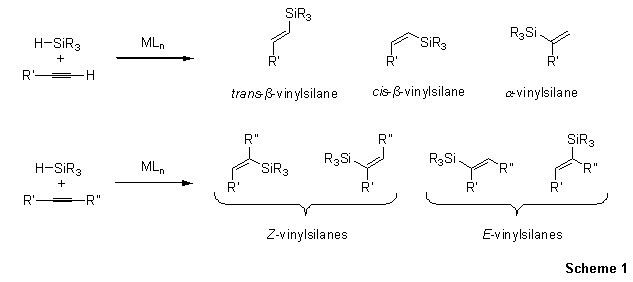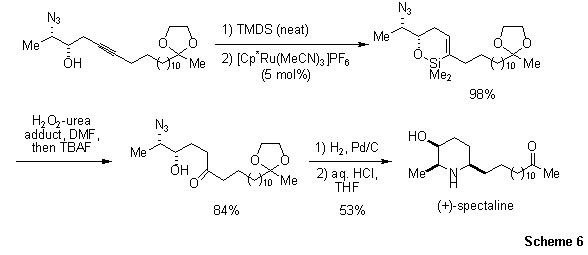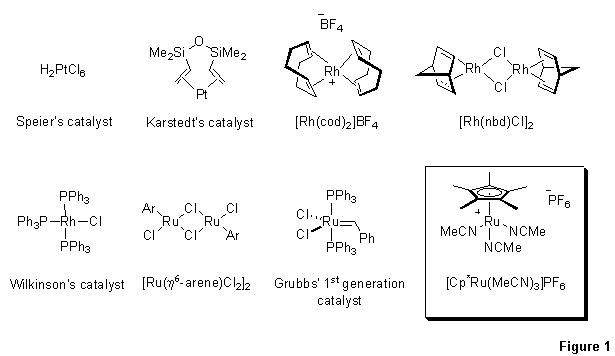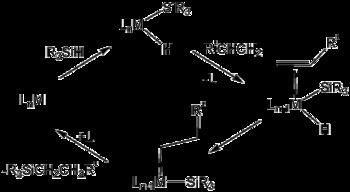 | ||
Hydrosilylation, also called catalytic hydrosilation, describes the addition of Si-H bonds across unsaturated bonds. Ordinarily the reaction is conducted catalytically and usually the substrates are unsaturated organic compounds. Alkenes and alkynes give alkyl and vinyl silanes; aldehydes and ketones give silyl ethers. The process was first reported in academic literature in 1947. Hydrosilylation has been called the "most important application of platinum in homogeneous catalysis."
Contents

Scope and mechanism

The catalytic transformation represents an important method for preparing organosilicon compounds. An idealized transformation is illustrated by the addition of triethylsilane to diphenylacetylene:
Et3SiH + PhC≡CPh → Et3Si(Ph)C=CH(Ph)
The reaction is related mechanistically to hydrogenation, and similar catalysts are sometimes employed for the two catalytic processes. Popular industrial catalysts are "Speier's catalyst," H2PtCl6, and Karstedt’s catalyst (an alkene-stabilized platinum(0) catalyst. One prevalent mechanism, called the Chalk-Harrod mechanism, assumes an intermediate metal complex that contains a hydride, a silyl ligand (R3Si), and the alkene substrate. The reaction usually produces anti-Markovnikov addition alkane, i.e., silicon on the terminal carbon. Variations of the Chalk-Harrod mechanism. Some cases involve insertion of alkene into M-Si bond followed by reductive elimination. In certain cases, hydrosilylation results in vinyl or allylic silanes resulting from beta-hydride elimination.
These reactions can also be catalyzed using nanomaterial-based catalysts.
Asymmetric hydrosilylation

Using chiral phosphines as spectator ligands, catalysts have been developed for catalytic asymmetric hydrosilation. A well studied reaction is the addition of trichlorosilane to styrene to give 1-phenyl-1-(trichlorosilyl)ethane:
Cl3SiH + PhCHCH2 → (Ph)(CH3)CHSiCl3Nearly perfect enantioselectivities (ee's) can be achieved using palladium catalysts supported by binaphthyl-substituted monophosphine ligands.
Surface hydrosilylation

Silicon wafers can be etched in hydrofluoric acid (HF) to remove the native oxide and form a hydrogen-terminated silicon surface. The hydrogen-terminated surfaces undergo hydrosilation with unsaturated compounds (such as terminal alkenes and alkynes), to form a stable monolayer on the surface. For example:
Si-H + H2C=CH(CH2)7CH3 → Si-CH2CHH-(CH2)7CH3
The hydrosilylation reaction can be initiated with UV light at room temperature or with heat (typical reaction temperature 120-200 °C), under moisture- and oxygen-free conditions. The resulting monolayer, which is stable and inert, inhibits oxidation of the base silicon layer, relevant to various device applications.
